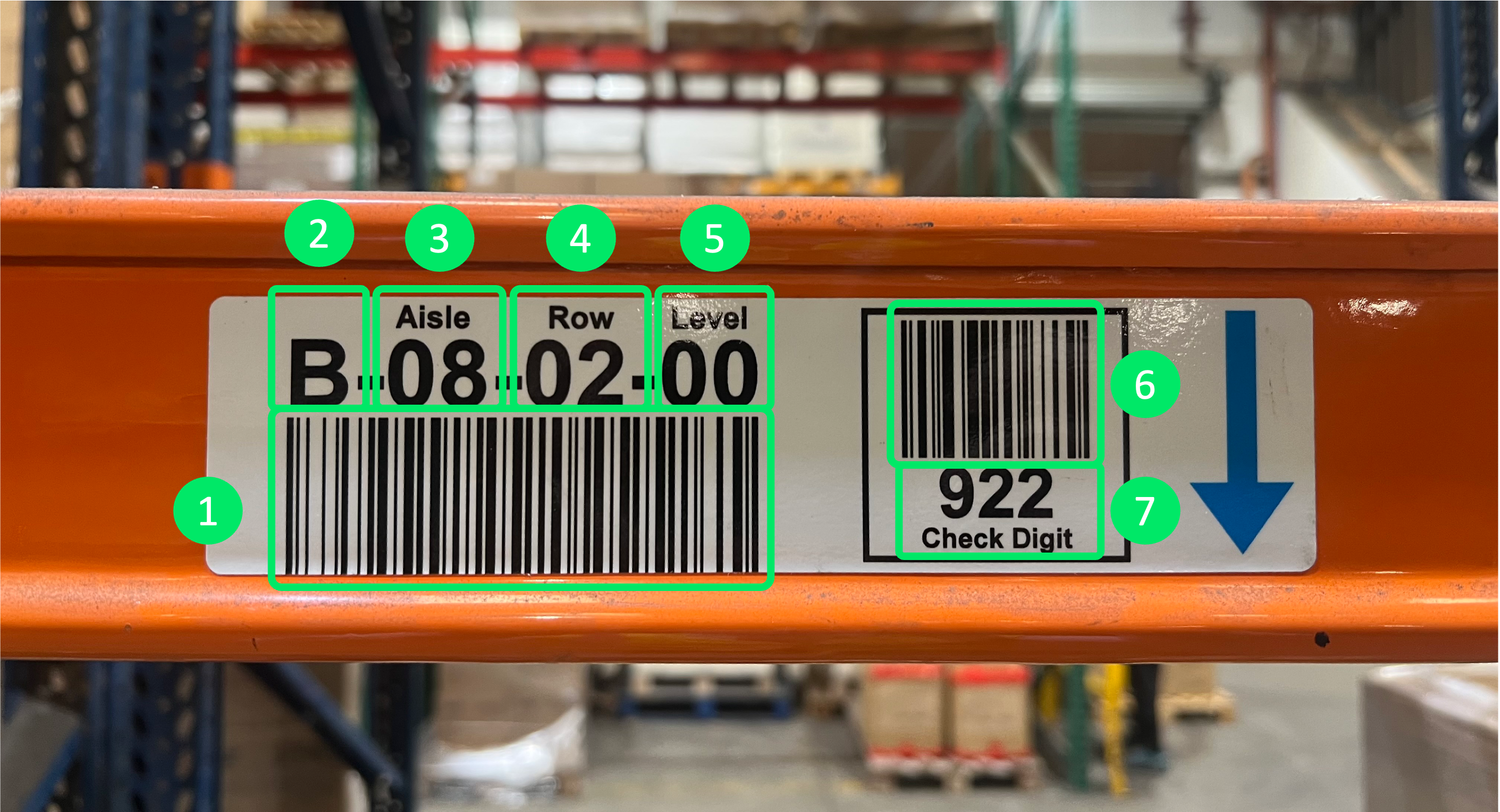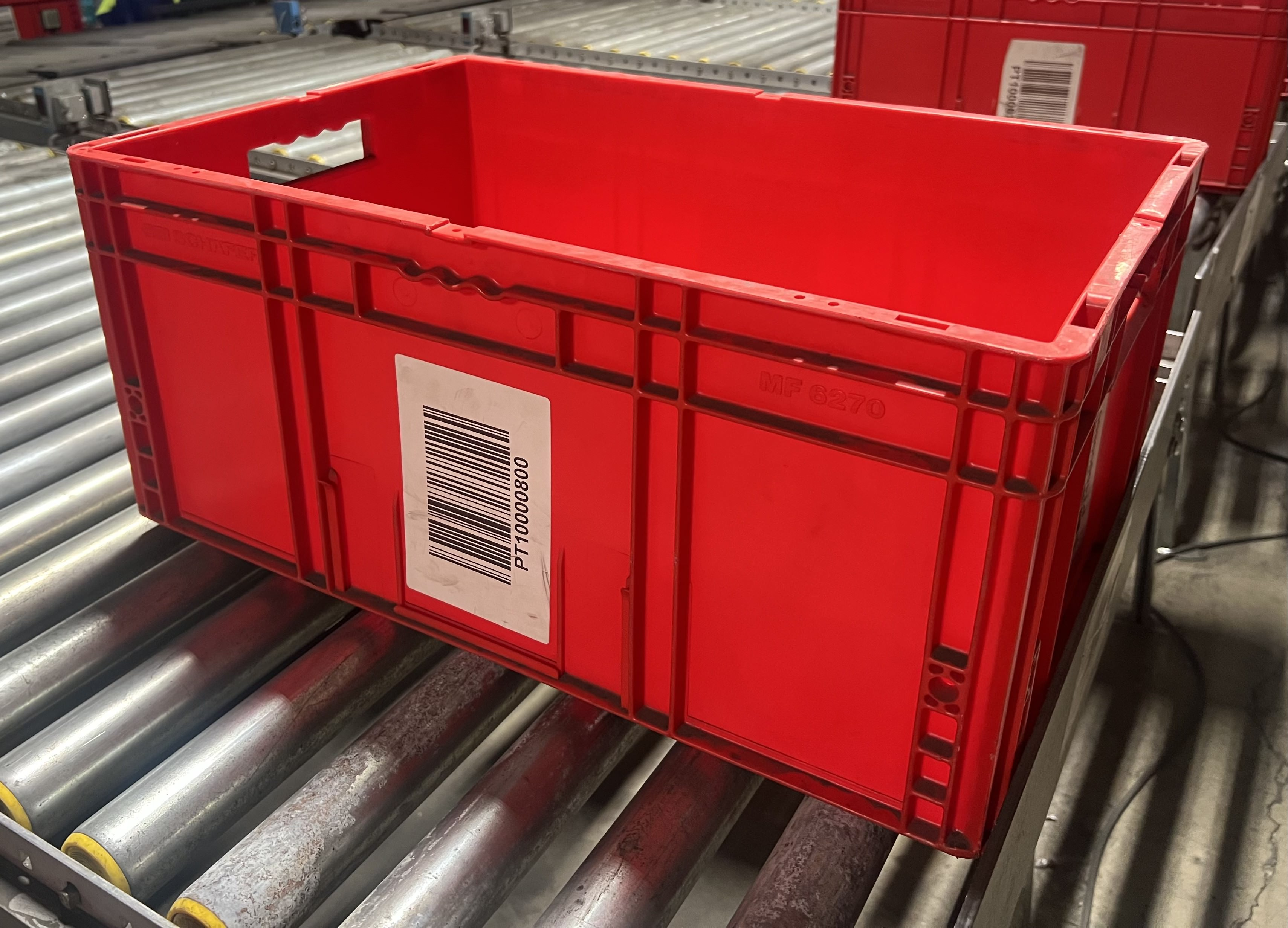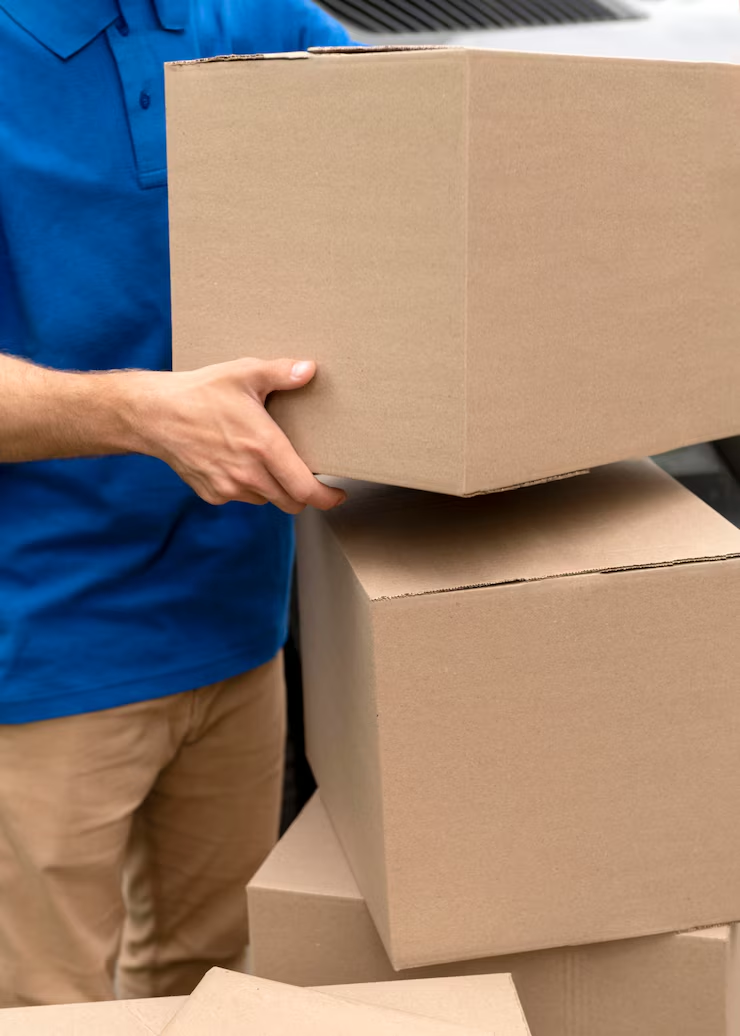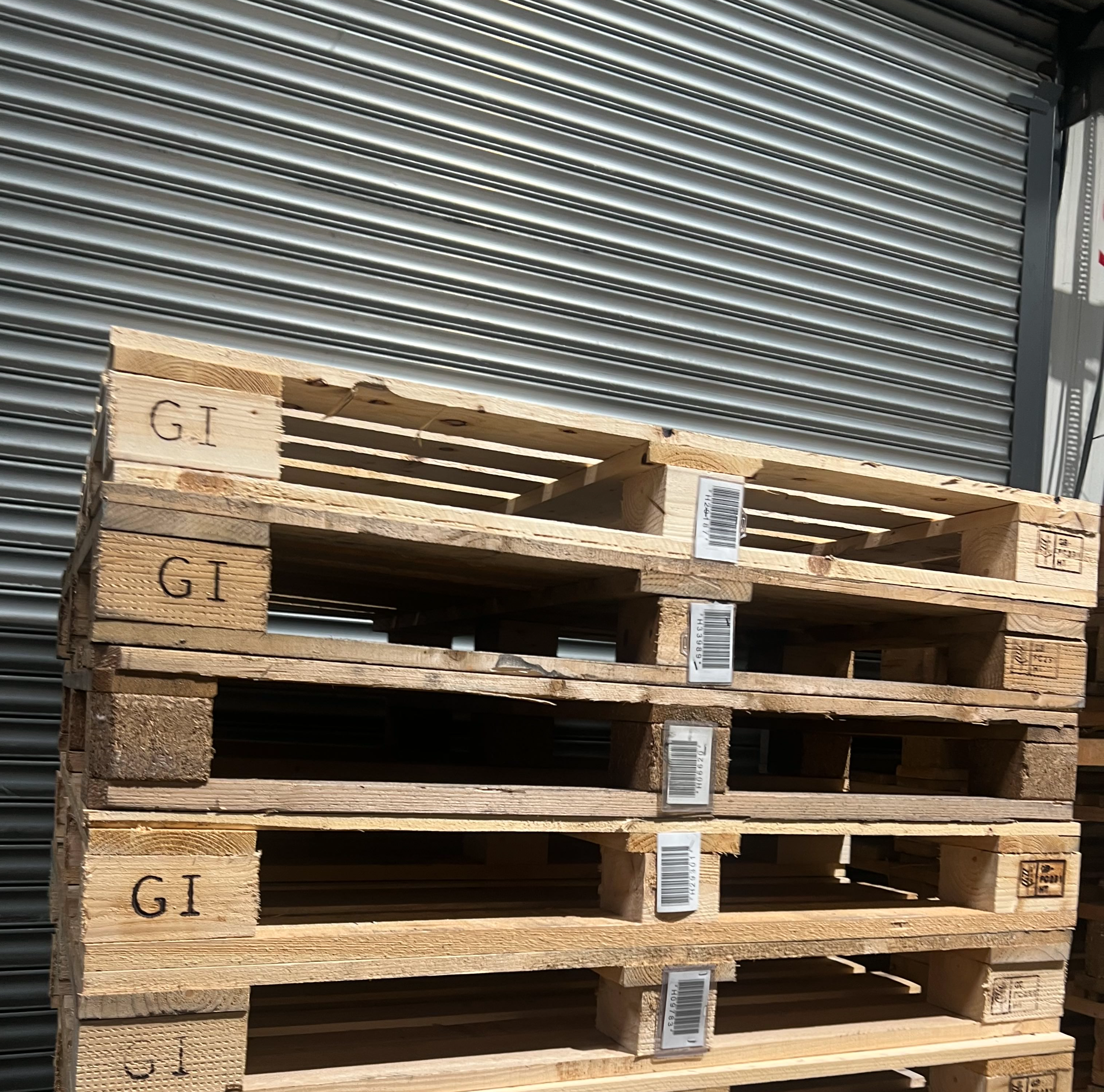🏷️ Real-World Examples of Warehouse Locations and Containers
Understanding how Canary7 maps physical warehouse elements to system data is essential for efficient scanning, picking, putaway, and auditing. This article explains how locations and containers are represented in your warehouse and tracked within the WMS. Physical warehouse locations are marked with clearly visible labels, typically on racks, shelves, or floor markings
📍 What Is a Warehouse Location Label?
In a physical warehouse, locations are marked with durable, visible labels, typically attached to racks, shelves, or floor markings. These labels include barcodes and printed data that correspond to system-defined locations in Canary7.
🔖 Example: Location Label on a Pallet Rack
Each location label contains key information to help users quickly identify and validate their position within the warehouse.

| No. | Field | Description |
|---|---|---|
| 1 | Location Barcode | Complete scannable identifier for the location. |
| 2 | Area | Broad warehouse zone or section (e.g. “Dry Storage”, “Cold Room”). |
| 3 | Aisle | Numbered or lettered aisle containing the rack or shelf. |
| 4 | Row | Specific shelf row within the aisle. |
| 5 | Level | Exact bay or slot on the row where items are stored. |
| 6 | Check Digit Barcode | Secondary barcode used to validate the main Location Barcode. |
| 7 | Check Digit | Numeric character that ensures scan accuracy. |
🎯 Why Location Barcodes Matter
⚡ Speed: One scan retrieves the full location data instantly, speeding up putaway, picking, and cycle counting.
✅ Accuracy: Scanning ensures the user is operating in the correct slot—minimising mis-picks and inventory errors.
📋 Auditability: Every stock movement in and out of a location is traceable, supporting reliable audits and investigations.
📦 What Is a Container in Canary7?
In Canary7, a container refers to any physical object used to hold or move goods within the warehouse. Each container is assigned a unique Container Number, which tracks its movement and contents across warehouse operations.
🧰 Common Container Types
🟦 Tote
A durable plastic bin used to carry small-to-medium items.
✔ Stackable, easy to carry, and ideal for multi-order picking.

🟥 Box
Standard cartons used for storage, packing, or dispatch.
✔ Tracked during packing and staging.

🟫 Pallet
An ordinary pallet used to carry and support goods in the warehouse.
✔ Treated as its own container can be given a license plate barcode for tracking throughout warehouse operations.

🔖 Why Container License Plates Matter
📍 Tracking: Containers can be scanned and moved as a unit, reducing the need to handle individual items.
♻️ Reusability: Totes and slave pallets are often reused across multiple jobs, improving efficiency.
📦 Packing & Shipping: License plates are used during packing, staging, and dispatch to track what’s inside each container.